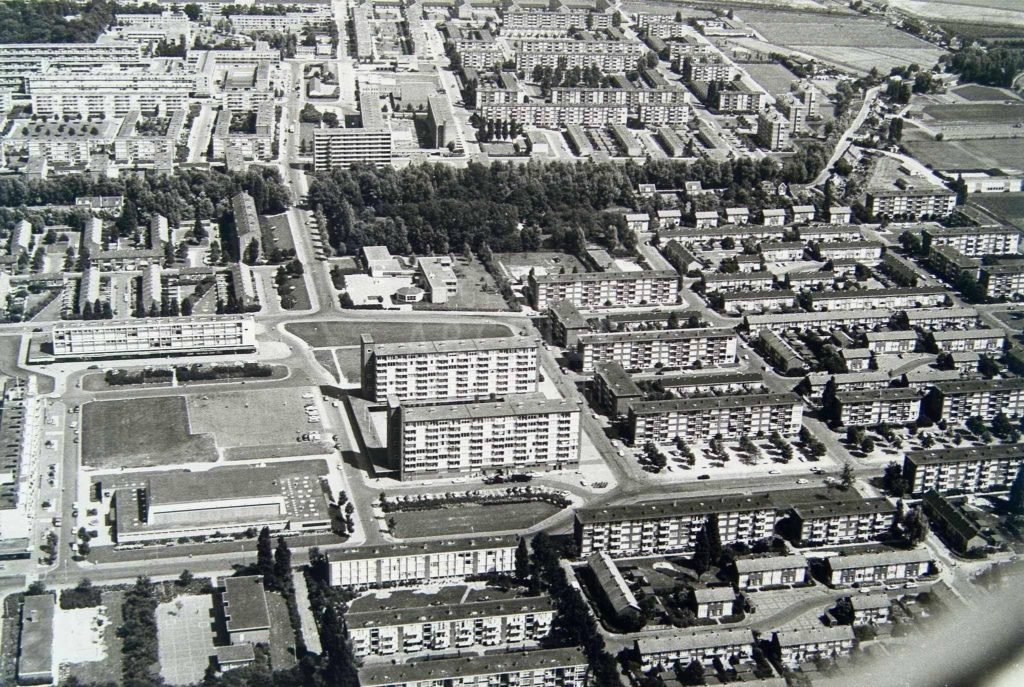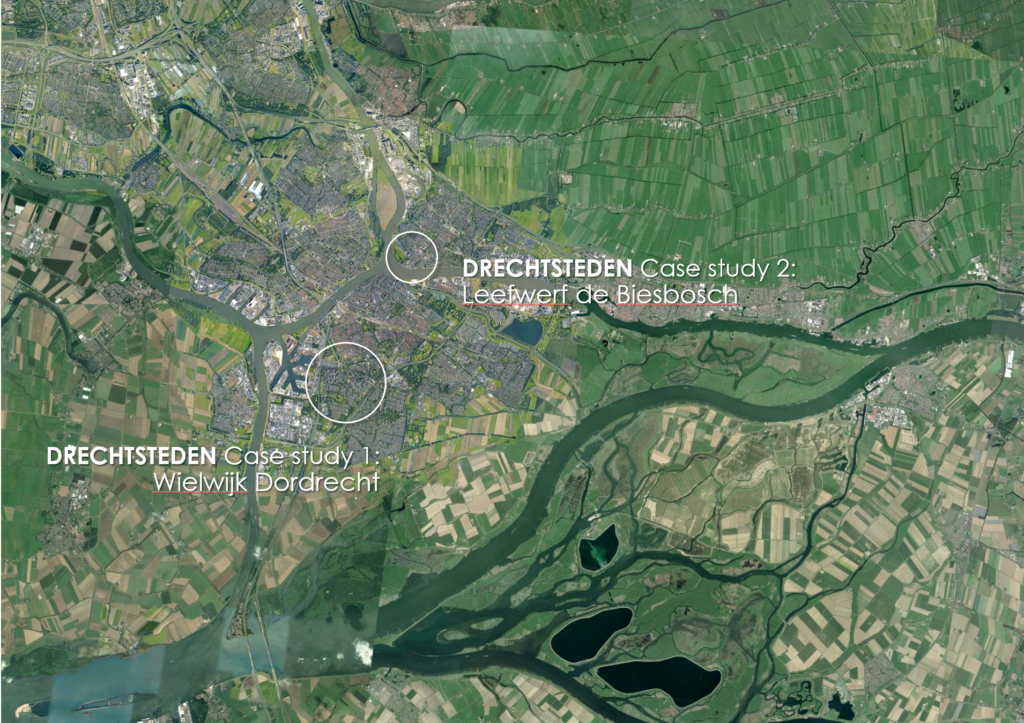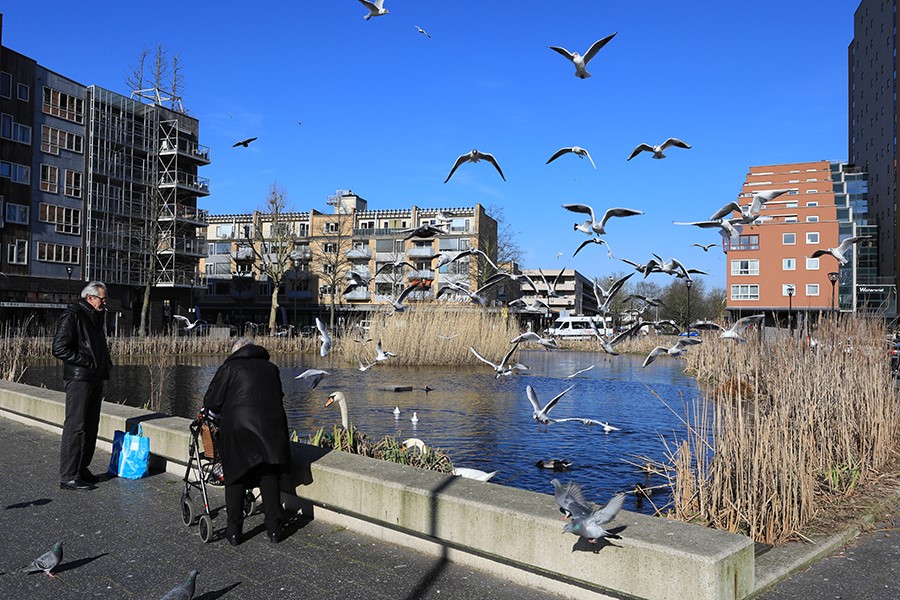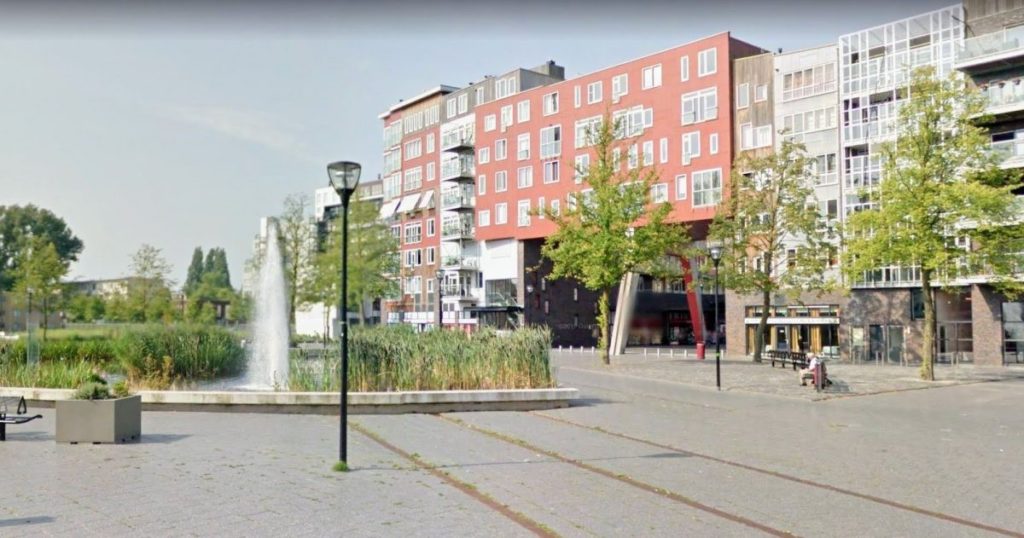Presentation
The housing stock in the Wielwijk neighborhood was largely built up between 1957 and 1963, there are approximately 2,855 homes, of which for a long time almost 90% belonged to the social housing stock. Many of these homes were erected from rubble remnants of the bombing of Rotterdam and were partly built for employees of the Holland America Shippng Line at the time.
In the center of the neighborhood is the public square Admiraalsplein. Large multi-storey housing blocks are situated around this central square separated by green spaces. Larger building blocks are often surrounding low-rise buildings in the middle of some of the blocks ensembles.
With the situation of a deprived neighborhood faced in the 1990’s, in 1996 the municipality agreed on the neighborhood vision “Wielwijk is continuing to renew” as the urban renewal program. In the period up to 2001 several projects were implemented to overcome and intervene in the one-sided housing stock. These mainly lead to demolishment of old flats, renovation of old flats, and construction of new flats. From 2004 onward, the larger city area of ‘Dordrecht-West’, of which Wielwijk is a part, was defined by the Ministry of Housing, Spatial Planning and the Environment as a priority/problem neighborhood (‘Vogelaarwijken’) among 39 others in the whole country, which offered them access to special funding options. However, still the neighborhood remained a marginalized one.
With the status of one of the national priority neighborhoods another period of active neighborhood transformation was started in 2007 and continued until 2015 (and will actually be extended until 2025).
In 2007, the vision for the future “Wielwijk strong and resilient” was set up (this vision is still the one used today). The neighborhood transformation started with an icon project, the central square Admiraalsplein. The square has been transformed into a more attractive public space; a “lively, beating heart of the neighborhood”. In 2012 the district center opened its doors. Old flats around the square were demolished and made way for new construction, partly for private sale.
The main goal for the current and upcoming neighborhood renewal attempts is to turn Wielwijk from a “poor and gray” neighborhood, once labeled as a problematic neighborhood because of the high amount of low income populations into a green and livable neighborhood. The urban design and greening interventions also aim at social effects. As one of the project managers frames it: “Through restructuring we want to keep the neighborhood tidy and in order” (project manager Mirjam Kiewiet).
In the current transformation phase, mainly the south of Wielwijk is affected. For example, larger flat units from a housing cooperative “Woonbron” will be demolished and replaced by single-family homes. The road M.H. Trompweg is transformed into an extension of the green zone / corridor from the Wielwijkpark. A new green area that connects the central square the Admiraalsplein with the Wielwijkpark (it is planned car-free). There are several other new housing projects emerging, there are conflicts in the Southern part around Wielwijkpark because parts of the park will be transformed into housing. That would mean a reduction in green spaces.
Geographical area
The Wielwijk neighborhood in the City of Dordrecht is facing the immense challenges of a marginalized post-war residential neighborhood that still contains mainly social housing stock, with predominantly medium to high-rise, lower quality apartment buildings, a clustering of lower income population, and a weak social infrastructure. Green and blue landscape elements are existing at the fringes of the neighborhood but are isolated and lack connections. The Wielwijk neighborhood is moreover separated and cut off from other city parts by large transport infrastructures (roads, train tracks, harbor areas), which manifest the isolated character of the neighborhood. Already starting from the 1990’s, the neighborhood has been part of urban renewal programs, to overcome the challenges, with different programs and “waves” of intervention and differing degrees of success. The current urban renewal approach focuses on strengthening the Wielwijk neighborhood from within by starting to better connect the green spaces with new green landscape corridors and by stepwise changing the building types e.g. from large multi storey apartment houses into single detached family houses.

Wielwijk is a neighborhood located South West of Dordrecht Center with a population of around 6000 people. The location of the Wielwijk neighborhood is separated and cut off from other city parts and the city center by large transport infrastructures, for example the national motorway A16 and the train tracks.



